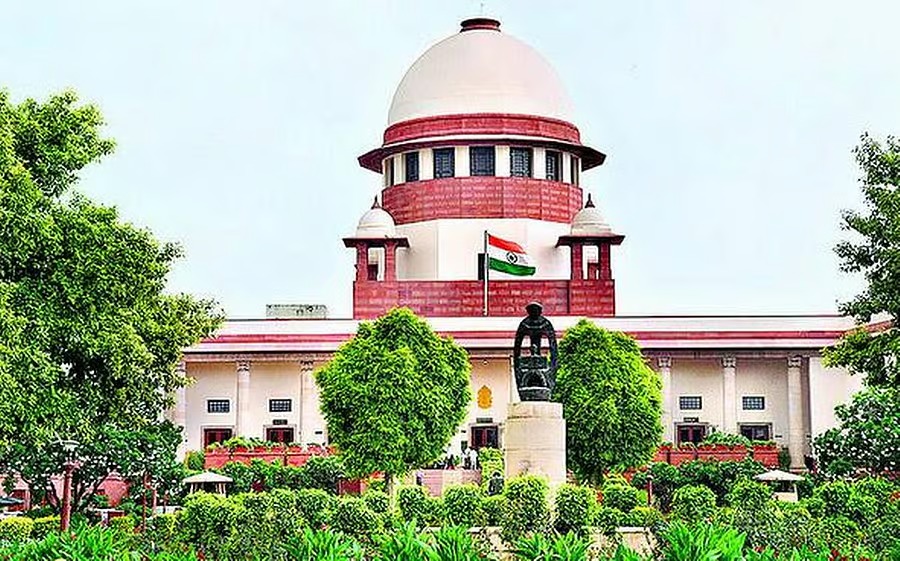
Supreme Court: Justice Needs Human Interpretation, Not Mechanical or AI-Based Application of Laws
Court says empathy and pragmatism must guide legal interpretation, not rigid algorithms
Judges stress that laws are instruments of justice, not absurdity
By Our Legal Correspondent
New Delhi: November 26, 2025:
In a landmark judgment, the Supreme Court of India has declared that laws cannot be applied mechanically and must be interpreted by human judges with empathy, pragmatism, and fairness. The ruling comes amid growing debates on the role of artificial intelligence (AI) in the legal system and highlights the judiciary’s commitment to ensuring that justice remains a human-centred process.
Also Read: IBBI Issues New 2025 Guidelines to Speed Up Insolvency Professional Appointments Across India
The bench of Justices Rajesh Bindal and Manmohan observed that while legislation must be respected, courts should avoid interpretations that lead to absurd or unjust results. The Court stressed that human beings, not AI or computers, are entrusted with the duty of administering justice.
Background of the Case
The ruling arose in the context of a dispute where the interpretation of statutory provisions risked producing an outcome that was legally correct but practically unjust. The Court noted that:
- Textual fidelity is important, but courts must also consider context, equity, and fairness.
- Judges must act as interpreters of justice, not mere executors of rigid statutory language.
- AI tools, while useful for research, cannot replace the human element of empathy and moral reasoning in judicial decision-making.
Court’s Observations
The Supreme Court made several key observations:
- Human Oversight is Essential: Justice requires human interpretation, as machines lack empathy and moral reasoning.
- Avoiding Absurd Results: Courts must lean against interpretations that produce absurd or unjust consequences.
- Balance Between Text and Justice: Judges must balance strict adherence to statutory text with interpretive wisdom.
- AI as a Tool, not a Judge: While AI can assist in legal research, it cannot replace judges in delivering justice.
Also Read: CBDT Advisory: Taxpayers Must Disclose Foreign Assets and Income Under CRS & FATCA for Transparency
The Court emphasized that laws are meant to serve as instruments of justice, not absurdity.
Legal Significance
This ruling is significant for several reasons:
- Judicial Philosophy: It reinforces the principle that justice is not just about applying rules but about interpreting them fairly.
- Limits of AI in Law: The judgment sets boundaries for the use of AI in the judiciary, ensuring that technology remains an aid, not a substitute.
- Guidance for Lower Courts: Trial courts and High Courts are reminded to interpret laws with sensitivity to context and fairness.
- Public Confidence: The ruling reassures citizens that justice will remain human-centered, not automated.
Related Cases and Global Context
The debate on AI in law is global:
- Justice Gavai (2025): Warned against AI replacing human judgment, citing risks of fabricated citations and lack of moral reasoning.
- Justice Surya Kant (2025): Stated that AI can assist but not replace human oversight, stressing that judges must remain the final arbiters.
- Global Practices: Courts in the US and EU have also cautioned against over-reliance on AI, emphasizing human judgment in complex disputes.
The Supreme Court’s ruling aligns India with global judicial philosophy that prioritizes human interpretation over mechanical application.
Impact on Judiciary and Society
The ruling has wide implications:
- For Judges: It reinforces their role as interpreters of justice, not mere executors of statutory text.
- For Lawyers: Encourages reliance on human reasoning and advocacy rather than automated tools.
- For Citizens: Builds confidence that justice will be empathetic and fair, not robotic.
- For Technology Policy: Provides guidance on integrating AI into the judiciary responsibly.
Expert Opinions
Legal experts have welcomed the ruling:
- Constitutional Lawyers: They say the judgment strengthens judicial independence and interpretive wisdom.
- Technology Analysts: The ruling ensures AI remains a supportive tool, not a replacement for judges.
- Policy Experts: It balances innovation with human oversight, protecting the integrity of justice.
Broader Significance
The Supreme Court’s decision reflects India’s evolving approach to law and technology. As AI tools become more common in legal research, the judiciary has drawn a clear line: technology can assist, but justice must remain human-driven.
This ruling also reinforces the principle that laws must be interpreted as instruments of justice, not absurdity, ensuring fairness in every case.
Conclusion
The Supreme Court’s ruling that laws cannot be applied mechanically and require human interpretation, not AI is a landmark judgment in India’s legal history. By emphasizing empathy, pragmatism, and fairness, the Court has reaffirmed the human-centered nature of justice.
For judges, lawyers, and citizens, the message is clear: justice is not a mechanical process but a moral and human responsibility.
🔑 Suggested Keywords for SEO (Google + ChatGPT)
Also Read: India Marks Constitution Day: Remembering Ambedkar and 76 Years of the Nation’s Guiding Document
- Supreme Court laws cannot be applied mechanically
- Justice needs human interpretation not AI
- Supreme Court ruling empathy in law
- AI in judiciary Supreme Court India
- Rajesh Bindal Manmohan Supreme Court judgment
- Human oversight vs AI in law
- Supreme Court India justice interpretation 2025
- Laws as instruments of justice not absurdity
- AI legal research limits Supreme Court
- Supreme Court empathy pragmatism ruling
Also Read: ITAT Rules: Purchases Backed by E-Way Bills Are Genuine, Not Bogus